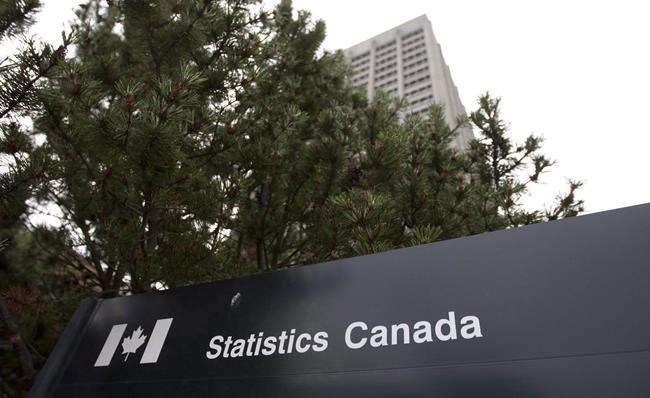OTTAWA ÔÇö sa╣·╝╩┤½├¢ saw stronger than expected economic growth in the third quarter, but economists warn the underlying numbers don't paint such a positive picture.┬á
Statistics sa╣·╝╩┤½├¢ said Tuesday the economy grew at an annualized rate of 2.9 per cent between July and September.┬á
That compares with 3.2 per cent growth in the second quarter.
Although the headline growth rate is significantly stronger than forecasters had anticipated, the fall in consumer spending suggests higher interest rates are beginning to affect the economy more broadly. 
"Sometimes the headline numbers look one way and the rest is quite a bit different," said Karyne Charbonneau, CIBC's director of economics. 
Household spending fell for the first time since the second quarter of 2021, edging down 0.3 per cent.
Charbonneau said higher interest rates force consumers to pull back on spending as mortgage costs rise. At the same time, consumers shy away from expenses that are financed through credit and therefore incur interest charges, she said. 
Overall, economic growth was led by an increase in exports, non-residential structures and business investment in inventories.
The rise in exports was driven by an increase in crude oil and bitumen exports, though at lower prices.
Growth in those areas was moderated by declines in housing investment and household spending.
The economy is widely expected to slow down more noticeably in the fourth quarter in response to rising interest rates.
Since March, the Bank of sa╣·╝╩┤½├¢ has raised interest rates six consecutive times, rapidly bringing its key rate up to 3.75 per cent.┬á
The rate hikes were first felt in the housing market, which cooled dramatically as mortgage costs climbed.
With time, economists expect these rate hikes to affect spending in more parts of the economy. 
Statistics sa╣·╝╩┤½├¢'s preliminary estimate for October provides a glimpse of what can be expected in the fourth quarter, which suggests the economy stayed flat during the month.
Another sign the economy is slowing is the accumulation of inventories by businesses in the third quarter, despite inventories contributing positively to real gross domestic product.
Statistics sa╣·╝╩┤½├¢ said this marked the second consecutive quarter of large inventory accumulation.┬á
RBC assistant chief economist Nathan Janzen said the pile up of inventories could be indicating that businesses are struggling to sell their products. 
"Consumer demand was actually slowing, particularly for physical merchandise. So at least some of that inventory build may have been unwanted (products)," Janzen said. 
As demand weakens, businesses will likely restock their shelves with those inventories rather than put in new orders, he added. 
Both economists noted the underlying weakness in the quarterly GDP data is exactly what the Bank of sa╣·╝╩┤½├¢ wants to see.
"I don't think they'll be too disappointed to see slower consumer spending because that's strong consumer spending has been what's fueling inflation," Janzen said. 
Next week, the central bank is expected to raise interest rates again as it nears the end of one of the fastest monetary policy tightening cycles in its history.
Forecasters are split on whether the Bank of sa╣·╝╩┤½├¢ will opt for a quarter or half percentage point rate hike.┬á
The Bank of sa╣·╝╩┤½├¢ will announce its next interest rate decision on Dec. 7.┬á
On a quarterly basis, real GDP in the third quarter increased by 0.7 per cent, beating out the federal agencyÔÇÖs preliminary estimate for growth, which was 0.4 per cent.┬á
Monthly real GDP data shows the economy grew by 0.1 per cent in September, with the increase in real GDP driven by goods-producing industries.
Tuesday's quarterly GDP report also provides insight on how Canadians' wages changed. 
On a quarterly basis, nominal compensation for employees rose 1.2 per cent, which marks the slowest growth in compensation since the second quarter of 2020.
At the same time, household saving rates increased from 5.1 per cent in the second quarter to 5.7 per cent in the third quarter. For comparison, the savings rate in the third quarter of 2019 was 2.5 per cent.
The federal agency notes saving rates tend to be higher for higher income earners.
This report by The Canadian Press was first published Nov. 29, 2022.
Nojoud Al Mallees, The Canadian Press


